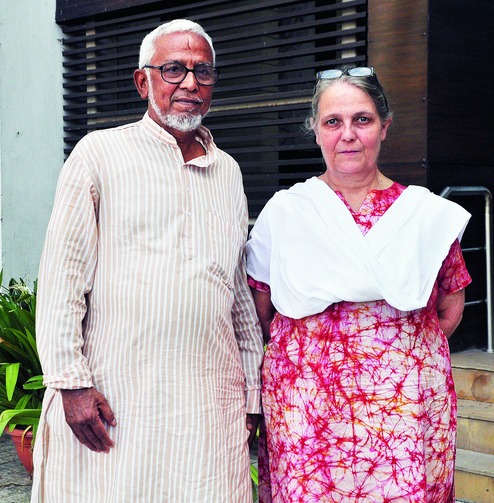Briton married to Bengali finds new calling after living in village

Calcutta:
She is from Lancashire in north-west England, he is from Bally in Howrah. Lindsay Barnes and Ranjan Ghoshhad met in the Eighties as students at Jawaharlal Nehru University and, fired by a shared idealism and sense of adventure, set up home in a village near Bokaro.
Sometime in 1993, Lindsay was forced by circumstance to help a village woman deliver a baby. She had no medical degree, only a book to help her. Since then, Lindsay has played midwife to scores of mothers and set up a 12-bed health centre with her husband Ranjan Ghosh to provide hundreds of others a safe place to give birth.
The couple have also brought together more than 7,000 women from 120 villages under various self-help groups, with Ranjan using his expertise to induct them into microfinance.
Lindsay and Ranjan, who were in Calcutta to attend a Mother’s Day programme organised by an infertility clinic in Kasba, said they planned to train junior doctors and nurses to deliver babies under limiting circumstances in rural areas.
Health care was, of course, not a choice Lindsay had made when she started living in Chambrabad village, 25km from Bokaro. A student of sociology, she was there primarily for research on life in the coal belt when a call for help changed her calling.
“Some neighbours approached me to help a mother-to-be,” she recounted. “I was astounded. I had no clue what to do. I was trying to put them off with excuses. It was my husband who goaded me to go,” 58-year-old Lindsay told Metro.
Armed with a book titled Where there is no doctor: A village healthcare handbook, Lindsay left home to help deliver the baby. “The local women who gathered around me knew I had no knowledge of midwifery, yet they were relieved to see me. They knew I would find a way out. That’s when it hit me that I must do something to help them,” she said.
Lindsay, now a mother of two, soon started receiving similar requests from other villages. “After a few home deliveries, I decided to educate myself in hospitals and nursing homes. I learnt a little and read a lot more to perfect my job,” she said.
After almost 100 home deliveries, Lindsaybegan hiring rooms for deliveries. She set up the 12-bed health centre in 2001. “The village girls now run the health centre with minimal support from qualified doctors. I am still called to handle critical cases. Ninety-five per cent of women have normal delivery. We refer critical cases to nearby hospitals,” she said.
According to gynaecologist and infertility specialist Sudip Basu, what sets Lindsay apart is her “practical knowledge”.
“It will be good if she can train our junior doctors and nurses how to treat patients under limiting circumstances. My team, in turn, can volunteer at her health centre. We plan to replicate the model in other villages.”
source: http://www.telegraphindia.com / The Telegraph,Calcutta,India / Home> Calcutta / by Chandreyee Ghose / May 14th, 2018